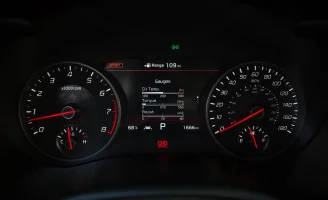While engine oil temp is important, what is even more so is the temp of the engine itself, more specifically, all the bearing mating surfaces: crank journals, wrist pins, camshaft bearings, piston/cylinder walls, etc. You want all those parts to be up to stable operating temp, so they are at their normal expanded dimensions and can best take high loads.
If your coolant has reached its normal stable operating temp, chances are most of the engine (in close proximity to the enveloping coolant jackets) has also reached operating temp. So, you were likely not causing too much problem loading the engine at that point.
That said, if your oil temp is still rising, that means there will be some temp gradient at the bearings, so not everything has settled into equilibrium just yet. If this were my car, I would wait a bit longer before hammering it.
As for the properties of the oil itself at 55C, most oil mfrs rate their multi-viscosity oils at 40C (as low temp range) and 100C ( at high range), so you can look up your oil's kinematic viscosity at those temps. 55C will be somewhat in between, obviously. I wouldn't consider that "cold", and certainly at 55C your oil pump should have no problem developing proper pressure - and more importantly - FLOW to critical bearing surfaces. If you use a 5w-30 oil, it might have a kinematic viscosity at 55C equivalent to a 10w-30 at 75C. As long as the oil is able to flow sufficiently well to the bearings, having a higher VI at high engine loads will yield better film strength for thin-film lubrication than a lower VI. This is why racing engines typically run higher VI oils, which better resist viscosity thinning at higher racing engine temps.
All this is a round about way of saying... yeah, you probably weren't doing major damage to your engine gunning it after 5min, BUT... best to wait till everything has stabilized at normal op temps.





